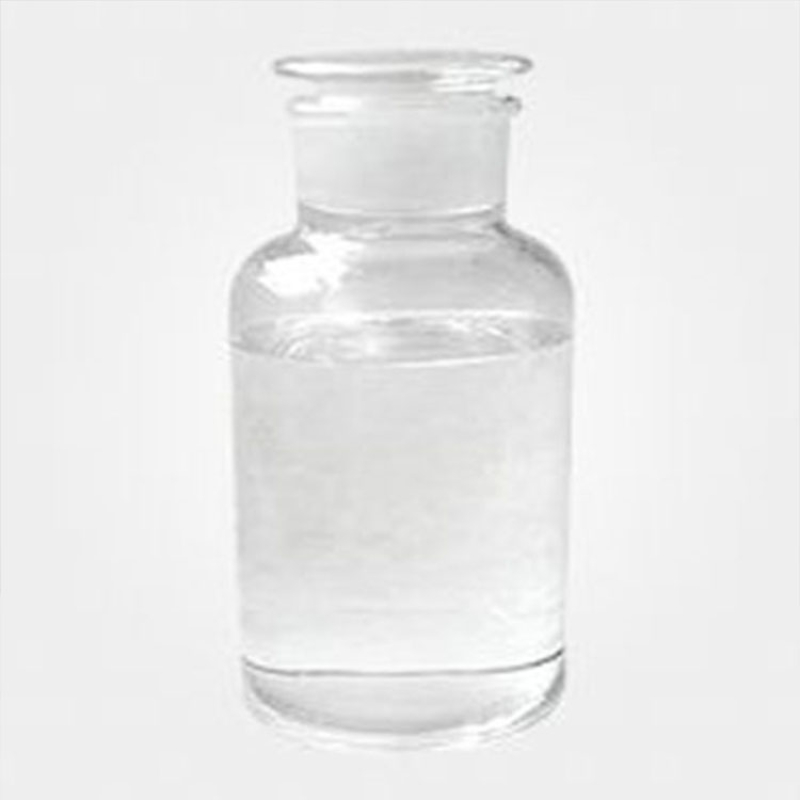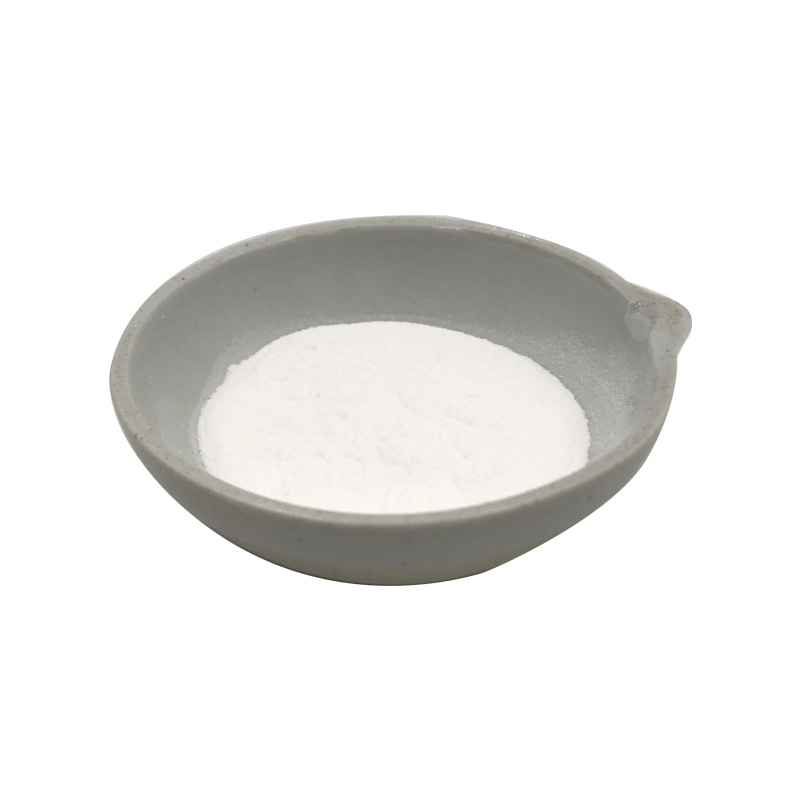Products Description of Benzylamine CAS#100-46-9Benzylamine, also known as benzylamine, is an organic compound with the chemical formula C7H9N.
Contact Now
Products Description of Decyl glucoside CAS#68515-73-1Decyl glucoside is a new type of nonionic surfactant alkyl polyglycoside (APG).
Contact Now
Products Description of Monomethylaniline CAS#100-61-8N-methylaniline is the main product in the N-alkyl aromatic amine series and an important intermediate in fine chemicals. Very versatile. my country's first set of production equipment was built with the aid of the former Soviet Union in the 1950s. The products are mainly used to make explosive centralizers and are often used to blend straight-run Chemicalbook gasoline.
Contact Now
Products Description of Cocamidopropyl betaine CAS#61789-40-0Cocamidopropyl betaine is a mixture, generally containing several main ingredients in different contents: decylamidopropyl betaine (abbreviated as C10), lauramidopropyl betaine (abbreviated as C12), myristamidopropyl betaine (abbreviated as C14), palmitamidopropyl betaine (abbreviated as C16), stearamidopropyl betaine (abbreviated as C18), etc.Cocamidopropyl betaine Chemical PropertiesBoiling point 104.3℃[at 101 325 Pa]vapor pressure 0Pa at 25℃storage temp. Refrigeratorsolubility Methanol (Sparingly), Water (
Contact Now
Products Description of Benzyl alcohol CAS#100-51-6Benzyl alcohol, also known as benzyl alcohol, has a molecular formula of C6H5CH2OH and a density of 1.045 g/mL at 25°C (lit.). It is the simplest fatty alcohol containing phenyl groups and can be regarded as hydroxymethyl-substituted benzene or phenyl-substituted methanol. It is a colorless, transparent, viscous liquid with a faint aromatic odor. Sometimes, after being left for a long time, benzyl alcohol will have a slight smell of bitter almonds due to oxidation.
Contact Now
Poly(oxy-1,2-ethanediyl), .Alpha.-Hydro-.Omega.-Hydroxy-, Mono-C12-14-Alkyl Ethers, Phosphates CAS#68511-37-5The molecular structure contains polyoxyethylene segments, hydroxyl groups, C12-14 alkyl ether and phosphate groups. This unique structure enables it to have multiple properties. It has good surface activity, can reduce the surface tension of the liquid, and play the role of emulsification, dispersion and wetting at the interface.
Contact Now
Styrene CAS#100-42-5 Styrene is a positive natural chemical compound having the chemical components C8H8 and structural system CH2=CHC6H5, additionally recognized as styrol, vinylbenzene, phenylethene,phenylethylene,styrene,styreen and so on. Its chemical shape is made up of a benzene ring bonded onto a vinyl team . At room temperature and pressure, styrene is a clear, colorless liquid.
Contact Now
Products Description of Phenylhydrazine CAS#100-63-0 Phenylhydrazine, also known as hydrazine, was first synthesized by German organic chemist Hermann Emil Fischer in 1875 and is the first synthesized hydrazine derivative. It is a light yellow crystal or oily liquid at room temperature and a monoclinic prism crystal at low temperature. It is easily oxidized in the air and becomes dark brown or dark red. It is one of the derivatives of hydrazine, often abbreviated as PhNHNH2. It is slightly soluble in water and alkaline solution, and soluble in dilute acid.
Contact Now
Products Description of 3,5-Dimethylacetophenone CAS#5379-16-83,5-Dimethylacetophenone is a chemical substance with the chemical formula C10H12O and a molecular weight of 148.21.3,5-DIMETHYLACETOPHENONE Chemical PropertiesMelting point 20°CBoiling point 98-100°C 8mmdensity 0,988 g/cm3refractive index 1.5290Fp 98-100°C/8mmstorage temp. Sealed in dry,Room Temperatureform powder to lump to clear liquidcolor White or Colorless to Almost white or Almost colorlessλmax251nm(MeOH)(lit.)BRN 2240987Safety InformationSafety Statements 24/25HS Code&nb
Contact Now
Products Description of 2,2-Dimethyl-1,3-dioxolane-4-methanol CAS#100-79-8(+,-)-2,2-Dimethyl-4-hydroxy-1,3-dioxane is a chemical.2,2-Dimethyl-1,3-dioxolane-4-methanol Chemical PropertiesMelting point -27℃Boiling point 189-191 °Cdensity 1.066 g/mL at 20 °C(lit.)vapor pressure 34Pa at 20℃refractive index n20/D 1.434Fp 176 °Fstorage temp. Sealed in dry,2-8°Csolubility 172g/l solubleform Liquidpka14.20±0.10(Predicted)color Clear colorlessPH4.0-7.5 (H2O)Water Solubility miscibleMerck 14,5213Safety Informa
Contact Now
Products Description of Benzyldimethylhexadecylammonium Chloride CAS#122-18-9Cetaxel chloride, also known as hexadecyl dimethyl benzyl ammonium chloride, is a cationic quaternary ammonium surfactant and one of the components of benzalkonium chloride (benzalkonium chloride is a mixture of benzyl alkyl dimethyl ammonium, in which the alkyl groups are mainly n-C12H25 (dodecane), n-C14H29 (tetradecane) and n-C16H33 (hexadecane)).Benzyldimethylhexadecylammonium chloride Chemical PropertiesMelting point 55-65 °C(lit.)Boiling point 550.14°C (rough estimate)density 0.9089 (rou
Contact Now
Products Description of Benzyldimethylhexadecylammonium Chloride CAS#122-18-9Cetaxonium chloride, also known as hexadecyl dimethyl benzyl ammonium chloride, is a cationic quaternary ammonium surfactant and one of the components of benzalkonium chloride (benzalkonium chloride is a mixture of benzyl alkyl dimethyl ammonium, in which the alkyl groups are mainly n-C12H25 (dodecane), n-C14H29 (tetradecane) and n-C16H33 (hexadecane)). Cetaxonium chloride has the characteristics of high lipophilicity and low water solubility.
Contact Now
Products Description of Polyisobutylene CAS#9003-27-4Polyisobutylene (PIB) is a non-toxic, water-white viscous liquid that exhibits excellent low-temperature flexibility due to its low glass transition temperature. It is a linear saturated polymer with a highly flexible molecular chain, which contributes to its superior elasticity and extensibility. PIB is recognized for its high chemical stability and can be tailored to various applications by adjusting its molecular weight, ranging from low to high molecular weights with viscosities varying from 5 to 4,700 cSt @ 100°C.
Contact Now
Products Description of HYDROXYLAMINE CAS#7803-49-8Hydroxylamine is also called "hydroxylamine". Chemical formula NH2OH. Molecular weight 33.03. Unstable white large flake or needle-shaped crystals. Very easy to absorb moisture, volatile, very soluble in water. Deliquesce in the air. Odorless, corrosive to the skin. When the concentration is 100%, 10%, 20%, 30%, 40%, 50%, the relative density of the aqueous solution is: 1.2040, 1.0192, 1.0410, 1.0637, 1.0875, 1.1122. The product decomposes in hot water and is slightly soluble in ether, benzene, carbon disulfide, and chloroform.
Contact Now
Products Description of Thiophene-3-ethanol CAS#13781-67-4Thiophene-3-ethanol can be used as a drug synthesis intermediate.Thiophene-3-ethanol Chemical PropertiesBoiling point 110-111 °C14 mm Hg(lit.)density 1.144 g/mL at 25 °C(lit.)refractive index n20/D 1.552(lit.)Fp 199 °Fstorage temp. Keep in dark place,Sealed in dry,Room Temperatureform Liquidpka14.92±0.10(Predicted)Specific Gravity1.144color Clear colorless to yellow-brownWater Solubility Sparingly soluble in water(0.059 g/L at 25°C).BRN 10708
Contact Now
Products Description of Sebacic acid CAS#111-20-6White flaky crystals. Slightly soluble in water, soluble in alcohol and ether.Sebacic acid Chemical PropertiesMelting point 133-137 °C (lit.)Boiling point 294.5 °C/100 mmHg (lit.)density 1.21vapor pressure 1 mm Hg ( 183 °C)refractive index 1.422Fp 220 °Cstorage temp. Store below +30°C.solubility ethanol: 100 mg/mLform Powder or Granulespka4.59, 5.59(at 25℃)color White to off-whiteOdormonoclinic prismatic tablets, wh.
Contact Now
Products Description of 4'-Methylpropiophenone CAS#5337-93-9The molecule of p-methylpropiophenone contains a polar carbonyl (C=O) bond and a non-polar benzene ring. The whole molecule is relatively polar, but also has a certain non-polarity. Therefore, it can be dissolved in non-polar solvents such as petroleum ether and benzene, as well as polar solvents such as ethanol and dimethylformamide. The molecule of p-methylpropiophenone contains a long alkyl chain and a benzene ring, and there are certain van der Waals forces and hydrogen bonding forces between molecules.
Contact Now
Products Description of 3,4-Dimethoxythiophene CAS#51792-34-83,4-Dimethoxythiophene is an organic compound with the molecular formula C6H8O2S.3,4-Dimethoxythiophene Chemical PropertiesBoiling point 100-102 °C/10-11 mmHgdensity 1.209 g/mL at 25 °Crefractive index 1.5409Fp 224 ºFstorage temp. -20°Cform powder to lump to clear liquidcolor White or Colorless to YellowWater Solubility Miscible with organic solvents.
Contact Now
Products Description of Bitertanol CAS#55179-31-2The pure product is a colorless crystalline solid. m.p. 125~129℃ (diastereomer A is 136.7℃, B is 145.2℃, and the low eutectic of A and B is 118℃). The vapor pressure at 20℃ is <1.0×10-3Pa [A is 3.8×10-3Pa, B is 3.2×10-3Pa (100℃)]. Solubility at 20℃: dichloromethane 100-200g/L (A is 200-500g/L, B is 50-100g/L), isopropanol 30-100g/L [20-50g (A or B)/L], toluene 10-30g/L [A is 10-20g/L, B is 1-2g/L], n-hexane 1-10g/L [≤10g (A or B)/L], water 5mg/L [2.9mg (A)/L, 1.6mg (B)/L]. Partition coefficient 126000 (A), 25000 (B).
Contact Now
Products Description of Bretazenil CAS#84379-13-5Brotacetin is a partial agonist of the GABAA receptor of the benzodiazepine class. It was first developed by Roche as an antianxiety drug. Studies have found that brotacetin can counteract the spasms caused by pentamethazine. At an antispasmodic dose (125-250 μg·kg-1), brotacetin combined with pyridostigmine (100 μg·kg-1, im) and aprofen (4 mg·kg-1, im) can prevent sarin and soman poisoning. Brotacetin has good antianxiety activity at a dose of 50-400 μg·kg-1. Compared with diazepam, it has little adverse reaction of myasthenia.
Contact Now
Products Description of Sodium cyanoborohydride CAS#25895-60-7Sodium cyanoborohydride is a chemical substance, a white or slightly yellow solid powder, and a mild reducing agent.Sodium cyanoborohydride Chemical PropertiesMelting point >242 °C (dec.) (lit.)Boiling point 307°Cdensity 1.083 g/mL at 25 °CFp −1 °Fstorage temp. Store below +30°C.solubility Soluble in water (100 mg/ml, with heating), methanol, ethanol, and THF.
Contact Now
Products Description of Direct Pigment Yellow 42 CAS#51274-00-1Barium sulfate has its chemical formula BaSO4. It is colorless or white orthorhombic crystals with relative molecular mass of 233.4, the relative density of 4.5 (15 ℃), the melting point of 1580 ℃, and the Refractive index of 1.637. Upon being heated to 1149 ℃, it will become monoclinic crystalline when the refractive index is 1.649. It is almost insoluble in water with the solubility being 0.00022 at 18 ℃ and 0.0041 at 100 ℃.
Contact Now
Products Description of SILICA CAS#10279-57-9Used as filler for paints and coatings, rubber reinforcing agent, plastic tackifier and thixotropic agent, thickener for synthetic grease and silicone greaseSILICA Chemical PropertiesMelting point 1610 °C(lit.)Boiling point >100 °C(lit.)density 2.6 g/mL at 25 °C(lit.)refractive index n20/D 1.544(lit.)storage temp. no restrictions.form tablets (~0.5 g each)Water Solubility Insoluble in water.Exposure limitsNIOSH: IDLH 3000 mg/m3; TWA 6 mg/m3EPA Substance Registry SystemSilica, h
Contact Now
Products Description of Sulfanilic acid CAS#121-57-3White or off-white crystal. Hydrates lose water at 100°C, and anhydrous substances begin to decompose and carbonize at 280°C. Relative density 1.485 (25/4).
Contact Now
































